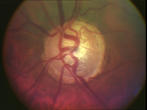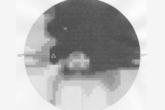www.augenklinik-stralsund.de/en/clinical-characteristics/glaucoma
Augenklinik Stralsund, Praxis Dr. med. M. Fechner
D-18435 Stralsund
Große Parower Straße 47
Klinikum am Sund
3rd Floor
Contact
Tel: +49 3831 380002
Fax: +49 3831 380003
The glaucoma is a disease which – due to an exceedingly high intraocular pressure – causes a loss of nerve fibres of the optic nerve.
In the interior of the eye, the ciliary body permanently secretes water, which runs through the pupil into the anterior eye chamber and from there through the trabecular meshwork, which is located in the chamber angle, against a certain resistance out of the eye. This mechanism generates the intraocular pressure which ensures that the eye keeps its shape and size and does not collapse or shrink like a ballon losing air.
In a sound eye, the intraocular pressure usually is between 10 and 20 mm Hg; it increases if the draining of the water is impaired or its production is increased abnormally.
Most of the glaucoma cases are accompanied by just a light to moderate increase of the intraocular pressure causing no or only minor discomfort as for instance a mild feeling of pressure in the eye or an occasional perception of rainbow colours around light-sources. In these cases, the damage to the optic nerve is gradually caused over the years and unnoticed by the patient
The loss of the optic nerve fibres causes characteristic, increasing failures in the visual field which do not become perceptible before the damage has seized the centre of the visual field causing a deterioration of visual acuity. Then, however, it is often too late and the complete and irrevocable loss of sight of the eye threatens. A failure of the visual field once occured cannot be reversed.
As, more and more frequently, the glaucoma occurs in the second half of life and is mostly not perceived by the patients themselves, it is important to regularly go to an ophthalmologist from the age of forty onwards so that the disease is diagnosed and treated in time. The diagnosis is made by measuring the intraocular pressure and on the basis of an examination of the visual field as well as of the optic nerve head. By these methods, the success of the treatment for lowering the pressure is monitored as well.
The increased intraocular pressure can be lowered and adjusted with drugs, by laser radiation and various operations. In case of a timely diagnosis of the glaucoma, an advancing damage to the optic nerve and the loss of sight of the eye can thus be prevented.
In rare cases, a complete occlusion of the chamber angle may precipitate an acute increase in intraocular pressure accompanied by severe complaints like headache, nausea and vomiting; this is called a glaucomatous attack.
Within days, this event may cause complete blindness of the affected eye and hence has to be treated immediately.



